Over the winter I had the opportunity to visit Berlin, Germany, and found myself in a modern city in the process of coming into focus. Berlin’s unique history and culture, combined with its relative accessibility and affordability, have made it one of the most rapidly growing (and changing) cities in Europe. An atmosphere of creativity and opportunity is blossoming in the German capital, where somber vestiges of prior conditions are layered with development and revitalization.
Today a fashionable and egalitarian melting pot, the city is rooted in- and intimately familiar with divides. Whether it’s the physical separation of East and West Germany, or the competing ideologies of capitalism and communism, Berlin’s material attributes and personality have been marked by dichotomy for decades. For me what stood out was the emotion of the place. The city’s architecture figures as a palimpsest; it is renewed, yet still bears traces of earlier forms.
-

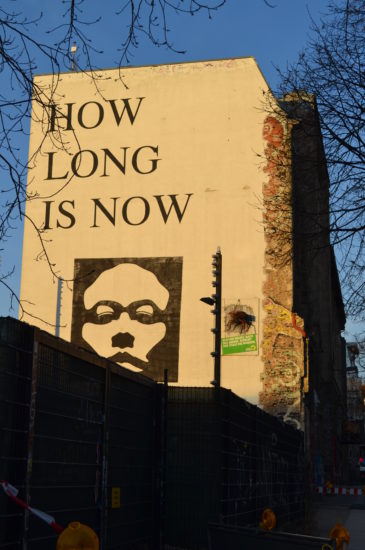
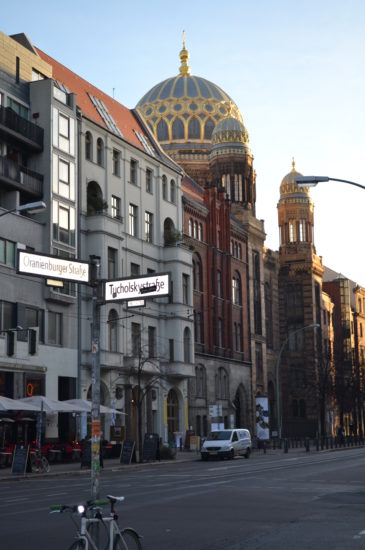
The most literal, and perhaps most powerful, example is the Berlin Wall. Though most of the physical architecture has long been dismantled, its effects can still be felt in myriad ways. At Checkpoint Charlie, the infamous crossing between East and West Berlin during the Cold War, the city’s fractured legacy is poignant. But one can also see subtler traces in many of the city’s edifices, and even the landscape. Walking the streets, I came across pieces of a terrifying history that were constantly being excavated and memorialized. Blemished surfaces and gaping holes recall violent destruction, while the jaunty Ampelmann (an archetypal pedestrian crossing signal) enjoys cult status as one of the few cultural features of communist East Germany to have survived the fall of the Iron Curtain.
-

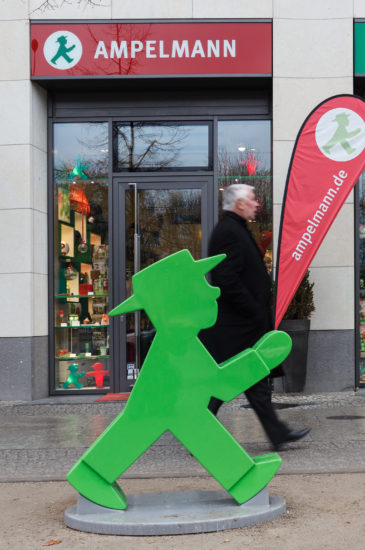
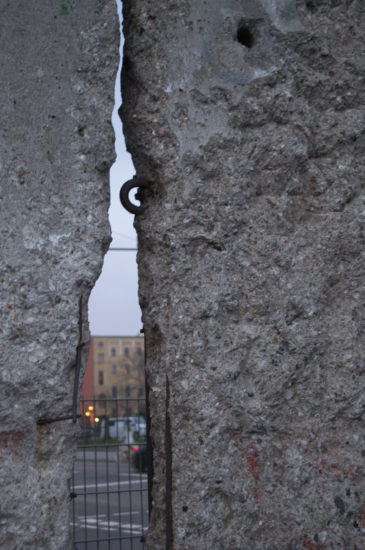
Neighborhoods on either side of the now-excavated wall each have their inheritance of partially erased narrative. Battered, but tenacious, some war-whittled buildings have persisted with little more than a facelift. Many plattenbau (monumental housing complexes favored by the Communist regime) sit unoccupied and in worsening states of disrepair while others have been modernized, their modular construction allowing them to be dismantled and moved to a new location. Contrasting these uniform monoliths is a mix of Gothic, Baroque, and Modernist achievements like the Neue National Gallery by Mies van der Rohe.
A bold reconstruction is underway at the site of the Berlin Palace, former home to Prussian kings and German emperors, which was destroyed during World War II. Plans for a new “Humboldt Forum” include a replica of the palace’s original Baroque façade, and newly designed interior spaces to house art exhibitions, restaurants, a theater, and other cultural offerings for the public. The recent renovation of the Neues Museum, led by architect David Chipperfield, has earned international design awards and has reintroduced its collections, including the treasured Bust of Nefertiti, for enjoyment by the public, while the Jewish Museum, designed by Daniel Libeskind, opened in 2001, housing more than two millennia of German Jewish history and artifacts.
I also found many artists expressing themselves at street level – transforming abandoned buildings (even remnants of the old wall) with colorful murals, and reclaiming some of these neglected spaces as studios, galleries, and performance houses. Underground concerts, poetry readings, and art openings are frequent and abundant.
-


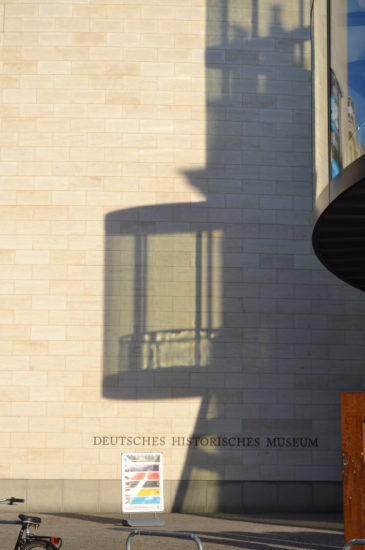
While the dominant vernacular in Berlin might be characterized as harsh – indeed its concrete and barbed wire are potent – an eccentric and beautiful blended culture is also palpable. The constant relationship between form and memory makes Berlin (and Berliners) uniquely self-aware. Fragments of a shared and painful past are creative fodder, making way for new means of expression and connection. Even as a guest of the city, one can’t help but reflect on the power and impermanence of history. Bearing witness to this city, I felt connected to its layered identity and inspired by its eloquent endurance.
About the Author:
Sarah Burgett-L. received her bachelor of art at Hampshire College and her master of design from RISD. With experience in apparel design and installation art, she brings a sculptural approach to her architectural and interior design work at Hutker Architects. At the heart of each pursuit is a desire to create layers of experience and meaning within constructed forms.